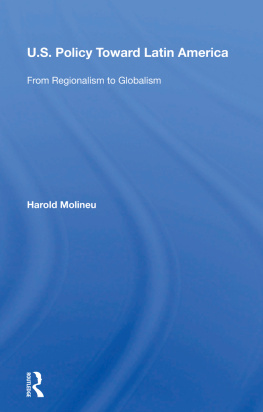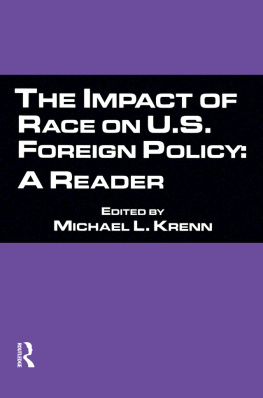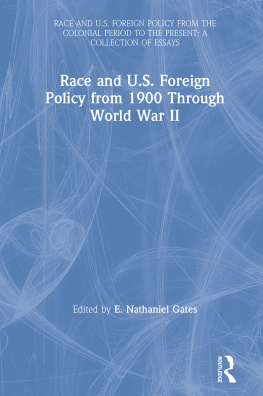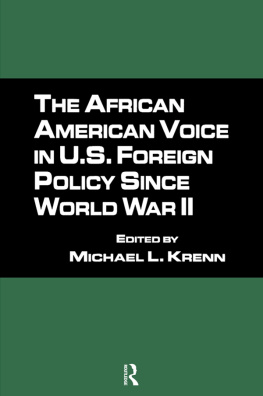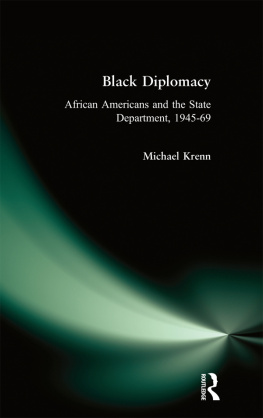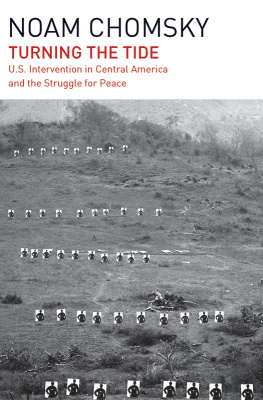Perspectives on Latin America and the Caribbean
THE CHAINS OF INTERDEPENDENCE
U.S. Policy Toward Central America, 19451954
Michael L. Krenn
A HOLY ALLIANCE?
Church, Labor, and the Communist Party in Costa Rica, 19321948
Eugene D. Miller
QUISQUEYA LA BELLA
The Dominican Republic in Historic and Cultural Perspective
Alan Cambeira
REVOLUTION REASSESSED
Democracy and the Left in Contemporary Central America
Stepehn R. Pelletier
First published 1996 by M.E. Sharpe
Published 2015 by Routledge
2 Park Square, Milton Park, Abingdon, Oxon OX14 4RN
711 Third Avenue, New York, NY 10017, USA
Routledge is an imprint of the Taylor & Francis Group, an informa business
Copyright 1996 Taylor & Francis. All rights reserved.
No part of this book may be reprinted or reproduced or utilised in any form or by any electronic, mechanical, or other means, now known or hereafter invented, including photocopying and recording, or in any information storage or retrieval system, without permission in writing from the publishers.
Notices
No responsibility is assumed by the publisher for any injury and/or damage to persons or property as a matter of products liability, negligence or otherwise, or from any use of operation of any methods, products, instructions or ideas contained in the material herein.
Practitioners and researchers must always rely on their own experience and knowledge in evaluating and using any information, methods, compounds, or experiments described herein. In using such information or methods they should be mindful of their own safety and the safety of others, including parties for whom they have a professional responsibility.
Product or corporate names may be trademarks or registered trademarks, and are used only for identification and explanation without intent to infringe.
Library of Congress Cataloging-in-Publication Data
Krenn, Michael L., 1957
The chains of interdependence: U.S. policy toward
Central America, 19451954 / Michael L. Krenn.
p. cm. (Perspectives on Latin America and the Caribbean)
Includes bibliographical references and index.
ISBN 1-56342-943-X (alk. paper)
1. Central AmericaRelationsUnited States.
2. United StatesRelationsCentral America.
3. United StatesForeign relations19451953.
4. United StatesForeign relations 19531961.
5. Central AmericaForeign relations. 6. Dependency.
I. Title.II. Series.
F1436.8.U6K74 1996
303.482730728dc20 96-23389
CIP
ISBN 13: 9781563249433 (hbk)
When I completed my first book, my colleagues glibly informed me that the second book would be easier. Now that this project is finished, those same colleagues are telling me that the third book will be even easier. I suppose I can take some solace in imagining that is true. At that rate, my fourth and fifth books should practically write themselves.
This book, however, did not write itself. It obstinately required a good deal of effort. Fortunately, I was aided in this project by a wide variety of colleagues, funding institutions, and archivists and librarians. I would like to take a few moments to thank those responsible for assisting in this work.
First and foremost, I wish to thank the University of Miamis Office of Research and Sponsored Programs for providing two successive summers worth of research funding.
Second, I would like to offer my grateful thanks to the archivists and librarians at the Harry S. Truman Presidential Library, the Dwight D. Eisenhower Presidential Library, the Library of Congress Manuscript Division, the National Archives, the Council on Foreign Relations, and the Seeley G. Mudd Manuscript Library, Department of Rare Books and Special Collections.
I also need to acknowledge the input of a number of my colleagues who made the ultimate sacrifice: reading rough drafts of various parts of the manuscript and then, as tactfully as possible, making suggestions for revisions. I did not always take the suggestions, though in every case that I did, the manuscript benefited enormously. Mark Gilderhus and Robert McMahon provided extremely useful comments on early drafts of the introduction and early chapters. My doctoral advisor, Lloyd C. Gardner, found that old graduate students never fade away; they just keep asking for letters of recommendation and comments on rough drafts. Thomas Leonard read and commented on an early draft of the first chapters and listened to so many of my presentations at conferences dealing with the project that he probably heard more of the manuscript that anyone else. My old Rutgers mate, David Schmitz, took it upon himself to read some early writing and then read what I then considered to be a final draft. He convinced me to take one more shot at getting it right.
I would like to offer a posthumous thanks to Howard Schonberger. I met this extremely gifted scholar only once, when he served as a commentator on a panel of which I was a participant. Though the study of U.S.Central America relations was not his primary interest, I approached him after the session and asked if he could look over the first few chapters of the manuscript. He eagerly agreed and followed up with a meticulous review, replete with excellent suggestions and much needed words of encouragement. Just a short time later, he passed away. The profession lost not just a fine scholar, but a supreme gentleman.
Finally, I would like to thank Peter Coveney of M.E. Sharpe Inc. for fortuitously dropping by my office last year and suggesting that I might send this manuscript to Stephen Dalphin. Working with Steve and the M.E. Sharpe staff, particularly Esther L. Clark and Christine Florie, was a true pleasure.
Im not sure that thanks are sufficient for my wife, Corinne Graff-Krenn, and my children, Annaleah, Madelinne, and Summer. After approximately four years of my being consumed by this project, however, it is about the best I can offer.
The Chains of Interdependence
In the last few years, the American people have been bombarded with descriptions of the new world in which they live. We now live in a global village, in which goods, people, and ideas intermingle with little regard for national borders and identities. Interdependence is the new buzzword used by the pundits to explain this development. The end of the Cold War has called forth a new beginning for the worlds people. In its most dramatic (and slightly ominous) characterization, it has been referred to as the new world order.
It might surprise the American people (and perhaps even the pundits) to know that such talk is not new. Nearly fifty years ago, following World War II, Washington was abuzz with exactly the same term as it is todayinterdependence. To better understand exactly what that term means in its historical sense, it behooves us to reexamine that tumultuous period in American history. What were the ideas behind interdependence? What was it supposed to accomplish? And, since the new calls for interdependence seem to indicate that it didnt succeed, why did it fail?
The world had dramatically changed. As World War II came to a close, U.S. policymakers were unanimous on that point. The changes went beyond those resulting from the death and destruction directly relating to the conflagration of war, although no one doubted that the level of mayhem had reached nearly unimaginable proportions. It went beyond the new technologies of annihilation, though there was no denying the awe and fear created by those mushroom clouds over Japan. The changes were of a more fundamental sort. The war had changed the world. It was now discussed in terms of its smallness; of how it had shrunk, as though the war, through its very destructiveness, had literally blown vast chunks of it away. New methods of communication and transportation were partly responsible for the use of such terms. In more basic language, however, what they were referring to was that the complex intermeshing of economics, politics, and societies on a world level which had been taking place since at least the early twentieth century meant that nations could no longer see themselves as purely autonomous players. Tradea vast marketplace of imports and exportsspanned the globe, involving all nations and people. Such trade had engendered more intensive political interchanges between nations, as alliances, defensive treaties, tariff agreements, and so forth were carefully put into place to cement the economic relationships. And the exchange of goods was resulting, more and more, in an exchange of people, as citizens of one nation more frequently visited another, sometimes to seek even more trading possibilities, sometimes simply to see how other peoples lived their lives.





